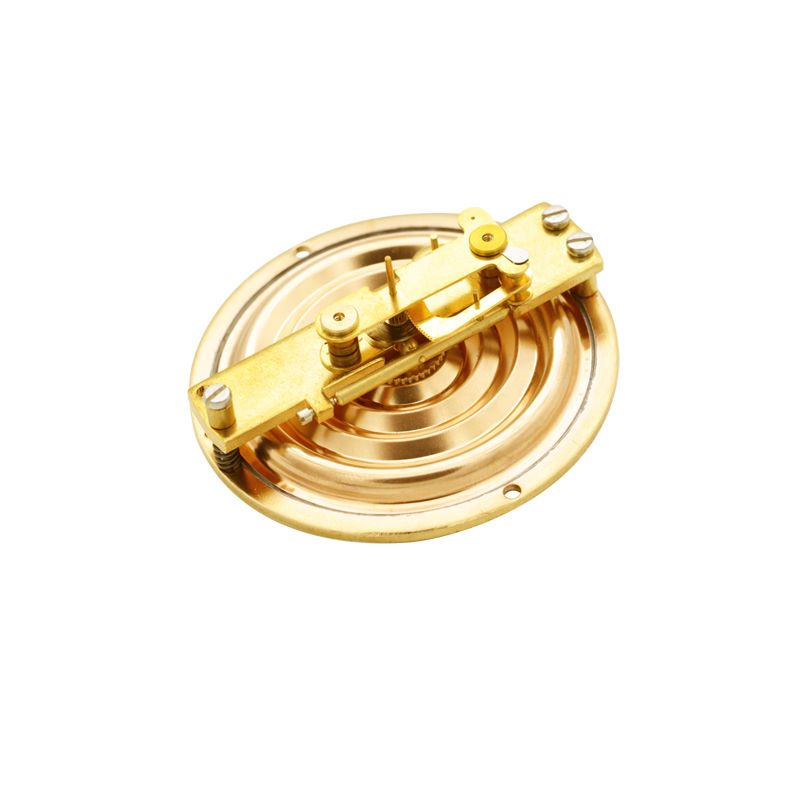
nov . 04, 2024 11:46 Back to list
Understanding Diaphragm Pressure Gauges and Their OEM Applications in Industry
Understanding OEM Diaphragm Pressure Gauges
In the realm of industrial instrumentation, pressure measurement is a fundamental requirement for the efficient and safe operation of various systems. One of the most reliable types of pressure measurement devices is the diaphragm pressure gauge. This article explores the significance of Original Equipment Manufacturer (OEM) diaphragm pressure gauges, highlighting their applications, benefits, and the technology behind them.
What is a Diaphragm Pressure Gauge?
A diaphragm pressure gauge is a device that measures the pressure of gases or liquids in a system. It operates on the principle of converting the mechanical deflection of a diaphragm, a flexible membrane, into a readable pressure value. When pressure is applied to one side of the diaphragm, it bends, and this movement is translated into an electrical signal or a dial reading that indicates the pressure level.
The Role of OEM in Diaphragm Pressure Gauges
OEMs are vital players in the manufacturing process of diaphragm pressure gauges. They design and produce these instruments to meet specific industry standards and customer requirements. An OEM diaphragm pressure gauge is typically tailored to fit specialized applications, ensuring that manufacturers can provide accurate and reliable pressure measurements in their equipment.
The customization aspect of OEM diaphragm gauges can include variations in size, materials, and pressure ranges, making them suitable for diverse environments—from food processing to chemical manufacturing. By working with OEMs, companies can ensure that their specific needs are met with precision-engineered solutions.
Key Applications
Diaphragm pressure gauges find utility in a wide array of industries
1. Chemical Industry Used to monitor the pressure of reactive and corrosive substances, diaphragm gauges crafted from compatible materials can withstand harsh environments.
2. Food and Beverage These gauges ensure that processes remain within safe pressure limits, crucial for maintaining product quality and safety.
3. Pharmaceuticals Precision in pressure measurement is vital in drug manufacturing, where exact conditions must be maintained for efficacy and safety.
4. Oil and Gas In exploration and production, diaphragm pressure gauges are employed to monitor system pressures, ensuring operational integrity.
Benefits of Diaphragm Pressure Gauges
Diaphragm pressure gauges offer several advantages that make them a preferred choice in many applications
oem explain diaphragm pressure gauge

- High Accuracy Their design allows for precise pressure readings, which is critical in applications where small discrepancies can lead to significant issues.
- Durability Built to withstand harsh conditions, diaphragm gauges are often constructed from robust materials that resist corrosion and wear.
- Compact Design Many diaphragm pressure gauges can be designed to fit into tight spaces, making them ideal for installations where space is a constraint.
- Low Maintenance With fewer moving parts compared to other types of gauges, diaphragm pressure gauges require less maintenance, thereby reducing operational costs.
Technology Behind Diaphragm Pressure Gauges
The technology of diaphragm pressure gauges has evolved, integrating advanced materials and electronic features. Modern gauges often include digital displays for easier readability and enhanced accuracy. Some may feature wireless connectivity, allowing for remote monitoring and integration with automated systems. This level of technological advancement facilitates real-time data collection and analysis, further improving operational efficiencies.
Selecting the Right OEM Diaphragm Pressure Gauge
Choosing the right diaphragm pressure gauge for a specific application requires careful consideration of various factors, including
1. Pressure Range Understanding the expected pressure limits is crucial for selecting a gauge that can accurately represent the necessary range.
2. Media Compatibility The materials used in the gauge must be able to withstand the fluids or gases being measured to avoid chemical reactions that could lead to failure.
3. Environmental Conditions Temperature, humidity, and other environmental factors can affect gauge performance, so selecting a gauge designed for those conditions is essential.
4. Calibration and Standards Verify that the OEM diaphragm gauge meets relevant industry standards and calibration requirements to ensure reliable performance.
Conclusion
OEM diaphragm pressure gauges play a critical role in various industries, offering an effective solution for pressure measurement needs. Their customization capabilities, durability, and precision make them indispensable tools in maintaining safe and efficient operations. As technology evolves, these gauges are likely to become even more integral to modern industrial processes. Understanding the specifics of diaphragm pressure gauges empowers stakeholders to make informed decisions that enhance productivity and safety within their operations.
-
High-Precision 5 Valve Manifold Differential Pressure Gauge Suppliers
NewsApr.29,2025
-
High-Precision Diaphragm Vacuum Pressure Gauges Manufacturers & Quotes
NewsApr.29,2025
-
Omega Differential Pressure Gauges High Accuracy & Durability
NewsApr.28,2025
-
Low Pressure Differential Pressure Gauges Precision Solutions & Quotes
NewsApr.28,2025
-
Digital Diaphragm Pressure Gaauge Precision Measurement & OEM Quotes
NewsApr.28,2025
-
Differential Pressure Gauge China Price High-Accuracy & Best Quotes
NewsApr.28,2025
